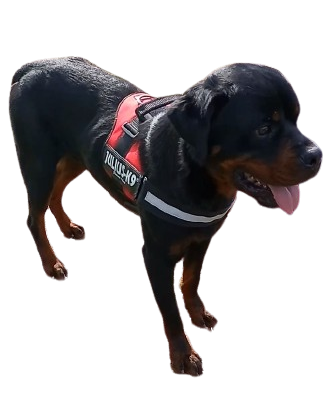Bringing a new dog into your life can be an exciting and rewarding experience, but it’s important to remember that it comes with responsibility.
As a new dog owner, you have the task of not only providing your furry friend with love and care but also ensuring that they are well-behaved and obedient. Training your dog is essential to help them become a happy and healthy member of your household.
However, it can be a daunting task for new owners who are unsure of where to begin.
In this blog post, we will provide some valuable dog training tips that can help make the process more manageable for you and your furry friend.
Whether you are a first-time dog owner or looking to improve your training skills, this post will help you build a stronger bond with your dog and create a more harmonious home environment.
The key elements of each training are a quiet and familiar environment, getting your dog’s attention, using positive reinforcement, and being patient and consistent. If you are able to provide these four basic elements, then let’s start.
Where to Start?
The most basic skill that a dog should learn first is obedience to their owner’s commands. This involves teaching your dog to respond to simple commands such as “sit,” “stay,” “come,” and “heel.”
These commands form the foundation for more advanced training and are essential for creating a well-behaved and obedient dog.
Obedience training also helps to establish your role as the leader and build a strong bond between you and your furry friend. Once your dog has mastered these basic skills, you can move on to more advanced training, such as agility training or specialized training for specific tasks.
Let’s say you’ve just adopted a new puppy. The first skill you should teach your pup is to respond to their name. This involves calling your puppy’s name and rewarding them with a treat or praise when they respond by looking at you or coming to you.
Once your puppy has learned to respond to their name, you can move on to teaching basic obedience commands such as “sit,” “stay,” and “come.”
Sit
To teach your dog to respond to your command “sit” you should begin training in a quiet room or a familiar outdoor space with minimal distractions. This will help your dog focus on you and the training session.
Before you start training, make sure your dog is looking at you. You can use their name, a treat or a toy to get their attention.
Hold a treat in front of your dog’s nose and move it slowly up and back towards their tail. As their nose follows the treat, their rear end will naturally lower to the ground. As soon as their bottom touches the ground, say “sit” and give them the treat.
Repeat the exercise several times a day in short sessions, gradually reducing the guidance you provide with the treat until your dog responds to the verbal command alone.
Reward your dog with praise and treats every time they respond correctly to the “sit” command. Positive reinforcement is an effective way to encourage good behavior and build a stronger bond with your dog.
Remember that the treat is small and well deserved. If you overfeed your dog with treats the training won’t be effective.
Be patient with your dog and avoid getting frustrated. Consistency is also crucial, so make sure to use the same command every time and keep the training sessions short and frequent.
Stay
Before teaching your dog to stay, they should already know the “sit” command. This will make the process easier and more effective.
Like with the “sit” command, start by getting your dog’s attention using their name or a treat.
After your dog is in the sit position, say “stay” while using a hand signal (such as a flat palm facing towards them).
Take one step back and return to your dog’s side immediately while praising them.
Once your dog is able to stay for a few seconds with one step back, you can slowly increase the distance and time. Take a step back and pause for a few seconds before returning to your dog’s side and praising them.
As always, use plenty of praise and treats when your dog responds correctly to the “stay” command. However, do not overfeed them with treats.
Once your dog has mastered the “stay” command in a quiet and familiar environment, practice in different locations with more distractions. This will help your dog learn to stay even when there are distractions around.
Never punish your dog if they don’t stay or if they break the stay command. Instead, simply go back a step and try again.
Come
This is the most challenging command that concerns most dog owners. As with teaching each command, this one should be approached with patience and consistency never with frustration and punishment.
Like with the previous training, you should start in a quiet environment where the dog’s focus is only you. Again, use their name or a treat to get your dog’s attention.
While your dog is in the sitting position, say “come” and take a step back while encouraging your dog to follow you.
When your dog comes to you, reward them with a treat or praise. This will reinforce the behavior and encourage them to come when called.
Repeat the exercise several times a day in short sessions, gradually increasing the distance between you and your dog. You can also practice in different locations with more distractions.
Reward your dog with praise and treats every time they come to you when called. Positive reinforcement is an effective way to encourage good behavior and build a stronger bond with your dog.
Never punish your dog for not coming when called, as this can cause them to become fearful and hesitant. Instead, simply go back a step and try again.
If your dog is not responding to the “come” command, you can use a long-line to gently guide them towards you while saying “come.”
Remember, teaching your dog to come when called is an essential skill for their safety and your peace of mind. With patience, consistency, and positive reinforcement, your dog will soon learn to come when called, making them a well-behaved and obedient companion.
Conclusion
Teaching your dog basic skills like sit, stay, and come is essential for building a strong and positive relationship with your furry companion.
These skills not only make your dog a well-behaved and obedient pet but also improve their safety and your peace of mind.
The key to successfully teaching these skills is to start with a quiet and familiar environment, get your dog’s attention, use positive reinforcement, and be patient and consistent.
Remember to always avoid punishment and use rewards, praise, and treats to encourage good behavior.
Once your dog has mastered these basic skills, you can move on to more advanced training and tricks, but these basic skills will always be the foundation of your dog’s training.
You may want to proceed to awaken your dogs curiosity and test their problem solving skills with Trixie Dog Activity Poker Box.
In conclusion, by teaching your dog these basic skills, you are not only creating a well-behaved and obedient companion but also building a stronger bond with your furry friend.
Frequently asked questions:
1. When is the best time to start training?
The best time to teach your dog basic skills like sit, stay, and come is as soon as possible. Puppies as young as eight weeks old can begin learning basic obedience skills, and the earlier you start, the better.
Consistent training from a young age can help your dog develop good habits and prevent bad behaviors from forming. Training sessions should be short, frequent, and conducted in a quiet and familiar environment to maximize your dog’s attention and focus.
It’s also important to note that dogs can continue to learn and improve their skills throughout their lives, so it’s never too late to start training your dog. Whether you have a puppy or an older dog, incorporating regular training sessions into their routine can help strengthen your bond and improve their behavior.
In summary, the best time to teach your dog basic skills is as soon as possible, whether they are a puppy or an older dog. Consistency and patience are key to successful training, and incorporating regular training sessions into your dog’s routine can lead to a well-behaved and obedient companion.
2. Can I teach my dog basic skills at home?
Yes, you can absolutely teach your dog basic skills at home. In fact, many pet owners find that training their dogs at home is not only convenient but also a great way to bond with their furry companion.
To teach your dog basic skills like sit, stay, and come at home, you will need to be patient, consistent, and use positive reinforcement. It’s also important to make sure that you have the necessary training tools and equipment, such as treats, a leash, and a clicker if you choose to use one.
There are many resources available online and in books that can guide you through the training process, or you may consider hiring a professional dog trainer to help you get started.
This book is a perfect guide about how to teach your pet basic commands.
Training your dog at home can be a fun and rewarding experience for both you and your pet. By incorporating regular training sessions into your routine and using positive reinforcement, you can help your dog develop good habits and become a well-behaved and obedient companion.
Dear Animal Friends,
Adopting a rescued animal is not just a choice, it’s a compassionate and responsible act that can change their world and yours.
By giving them a second chance at life, you are not only saving them from a life of hardship, neglect or even euthanasia, but you are also gaining a loyal and loving companion who will forever be grateful for your kindness.
Remember, one person may not be able to save every animal in need, but we can all make a difference in the life of one.
So, if you’re ready to make a difference in a dog’s life and add a new member to your family, head to my FB page today and adopt a furry friend!
Also, by making a donation to Nevena’s Rescues, you help my animals with the care and support they need to live happy and healthy lives till adoption.
Sincerely,
Nevena’s Rescues















